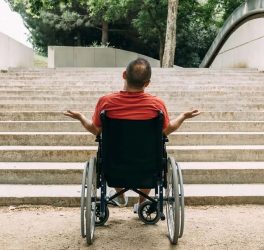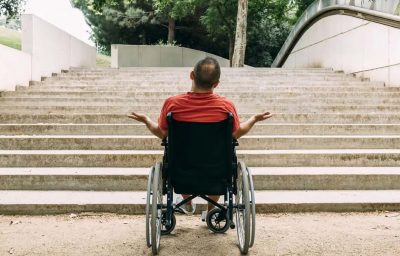
Many teenagers get nervous when they think about going to college. In 2012, Matthew Walzer’s biggest concern about college was not being able to tie his own shoes. Walzer has cerebral palsy, a condition that affects his walking, balance and fine motor skills.
Walzer, now 25, of Southwestern Florida, remembers thinking, “How am I going to ever live on my own and be independent if I have to worry about my parents coming to tie my shoes every day…”
At 16, Walzer wrote a letter to Nike, explaining his predicament:
“I’ve worn Nike basketball shoes all my life. I can only wear this type of shoe because I need ankle support to walk,” he wrote. “I know that Nike makes slip-ons, sandals and other types of shoes. However, I and many other physically challenged people are unable to wear them due to a lack of support.”
Nearly a decade later, Nike sells Go FlyEase, a completely hands-free shoe. The sneaker’s unique design allows for easy on and off – without using hands.
Walzer said he was shocked when Nike responded.
“They wanted to know what my specific needs were. They wanted to know why I can’t tie my shoes, to hear it straight from me. Also, I explained that I have a lack of dorsal and plantar flexion my feet. So, it’s hard for me to get my foot down in a shoe,” he explained.
When Walzer was 17, Nike gave him a pair of shoes that had “a zipper up the middle, and Walzer on the zipper pull tab and then a Velcro strap on the ankle, no laces.”
“It was the first time in my life at 17 years old that I put my own shoes on independently,” he said. “It was an extremely emotional moment for myself and my family. A lot of tears.”
“Companies really need to make it a point to not only listen to the disabled community but also design with disability in mind,” he said. “As a disabled population, we’ve always had to adapt to the environment with literally everything — clothes, shoes, technology. Now, truly, the world needs to start adapting to us…”
Sarah Reinertsen, key member of the Nike FlyEase Innovation Team and the first woman with a prosthetic leg to complete an Ironman race, told TODAY, “We’ve been very sharp on listening to the voices of people with disabilities.”
The development of adaptive shoes started when a Nike employee had difficulty putting on shoes after having a stroke.
Universal design is beneficial for everyone. “When you design for the most extreme needs, you unlock benefits for all. And while these innovations might be even more impactful for those with extreme needs, we all benefit, and it makes our lives easier,” Reinersten said.
She is excited about the hands-free shoe and its implications for all people, with and without disabilities.








